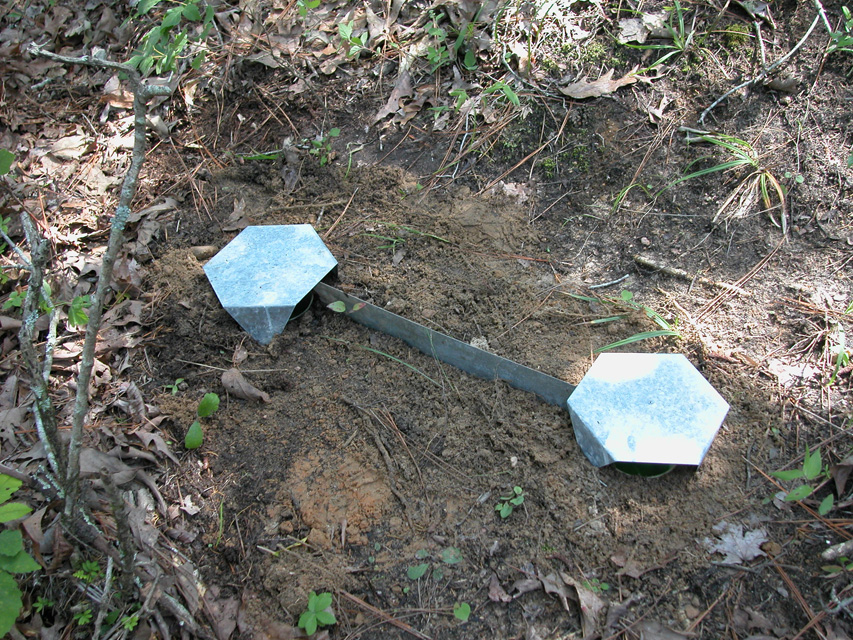Pitfall Traps |
There are many variations of pitfall traps, but in its most basic form, a pitfall trap consists of some type of cup or other container (gallon bucket, for example) that is submerged in the soil and partially filled with a preservative. Insects and other organisms crawling about on the ground simply walk into the container and then cannot get out. Pitfalls can be covered to help prevent excessive rain from overflowing the cup, they can have guide vanes that may help guide organisms into the cup, and they may be baited to capture more specific types of insects. The pitfall traps that we use consist of two plastic delicatessen cups, steel guide vanes, and a hexagonal steel cover. Each cup haa an inner diameter of 11 cm at the top, an inner diameter of 8.8 cm at the bottom, and a depth of 7.8 cm. Cups are placed in holes in the ground that are dug with a golf course cup cutter, which minimizes impact to the surrounding area. Two cups, one inside the other, are placed in each hole so that that any rain water will fill the bottom cup and float the top cup upwards to prevent loss of the trap contents. Each of the steel guide vanes used per trap measures 7.2 cm by 30.6 cm . We either use three guide vanes placed equilaterally around the cups and sunk in the ground approximately 2.0 cm, or one guide vane placed between two pitfall traps. A hexagonal steel cover, made by bending the corners of a equilateral triangle to form downward projecting points, is placed over the top of the nested cups to help divert rain. The trap cup is filled approximately halfway with a 50/50 mixture of propylene glycol and 70% ethanol, with a pinch of dentonium benzoate added to deter mammals from drinking the solution. |
 |
Closeup of a pitfall trap showing cover and steel guide vane. |
 |
Pitfall trap with steel covers and guide vane separating them. The deli cups with antifreeze/alcohol mix are submerged in the soil below the covers. |


